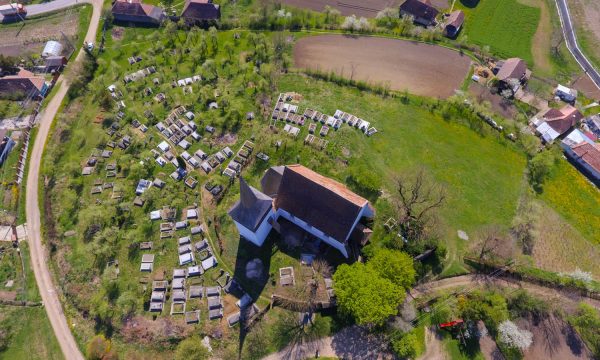Legend
Located along the central flow of the river Niraj (Hu: Nyárád), the village of Sănvasii used to be one of the main centres of the Saint Laduslaus cult before the Reformation, due to its church, which was also devoted to Saint Ladislaus. In the 16th century, the bulk of the population converted to Unitarianism; nevertheless, even if the vernacular cult of the king suffered a significant decline, some of the legends about the king managed to survive until the 19th – 20th century. In his famous work, The Description of Szeklerland, Balázs Orbán traced the origin of the name Nyárádszentlászló to a bygone monastery which – according to the popular tradition – used to stand on the top of the hill, in place of the present-day Unitarian church.

At the margin of the village there is yet another relic of the cult of Saint Ladislaus. The King’s Well (Királykút) brook springs from the nearby village Maiad (Hu: Nyomát), and its name draws again our attention to the local importance of king Ladislaus. According to the oral tradition, the king made a rest at the fountain during one of his hunting trips. Another tale connected to the spring draws back to the time of the Mongol invasion. Legend says the people from Maiad hid the bell of the village in the water, after which the treasure hunters searched for several times.

The memory of the Sygers, a medieval landowner family from the region, was also kept alive by legends. Beginning with the 19th century, rumours spread about the family’s outstanding castle, its basement believed to be filled with treasures; the castle was said to be connected with the Saint Ladislaus church by a suspension bridge stretching above the valley.
The memory of king Saint Ladislaus is mainly kept alive in the Catholic villages located along the headwaters of Niraj river. Medieval churches of the area supposedly still hide some of the murals portraying the king’s legends.
Natural Heritage
Sănvasii is located on the western edge of the largest Dealurile Târnavelor – Valea Nirajului Natura 2000 (ROSPA0028) site, in an especially important bird protection area. The reason behind the importance of the region is the great diversity of its habitats that provide a home to several important species.

DCIM100MEDIADJI_0260.JPG
Visiting the meandering Niraj (Hu: Nyárád) river, right on the outskirts of the village, we will discover a rich bird life. We can observe the shining blue common kingfisher (Alcedo atthis) as it searches for prey perching on a branch above the water, or the common little bittern (Ixobrychus minutus), which winters in South Africa. The little bittern is so light that it can stand on reed while watching for small fish, insects or amphibians to eat. Looking at the skies, we can spot the lesser spotted eagle (Aquila pomarina), an eagle relatively small among its kind, but common in the hills of Transylvania. Its presence indicates a good quality and variety of food sources in the area. This is not by accident. The Niraj river supports a rich wildlife, which in turn feeds numerous birds.
Many rare and valuable fish species can be found around Sănvasii, such as the endangered Kessler’s gudgeon (Romanogobio kessleri), the still numerous Romanian barbel (Barbus petenyi), the protected Danube whitefin gudgeon (Romanogobio vladykovi), the Balcan spined loach (Sabanejewia balcanica), and the Cobitis elongatoides. The latter two species are sometimes popularly called ‘chick-cutters’ for their spikes beside their gills. The European bitterling (Rhodeus amarus) can also be found here. Its females use ovipositors to place their eggs inside mussels. Another species of these waters is the common nase (Chondrostoma nasus), popular among fishermen, which spends most of the year in groups.
